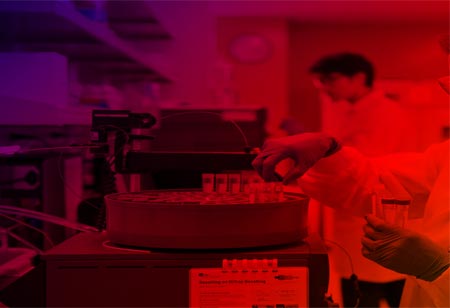Chemical engineers have been instrumental in finding and synthesizing several chemical compounds that operate as pesticides to destroy bugs and herbicides to kill weeds.
FREMONT, CA: Chemical engineers are helping to improve food production. Today synthetic and organic fertilizers greatly increase crop yields, while herbicides and pesticides aid in safeguarding crops from damage.
Adding science to the soil
Soon after former civilizations started planting and harvesting, they commenced experiments to increase the return of their crops. Efforts were concentrated on two common areas:
• Fertilization to boost growth and enhance crop size, and
• Security from pests and weeds to lower damaged crops.
Pesticides and herbicides
Along with producing new, more effective nitrogen fertilizers, chemical engineers support protecting valuable crops as opposed to weeds, insects, and other pests. Chemical engineers have been instrumental in finding and synthesizing several chemical compounds that operate as pesticides to destroy bugs and herbicides to kill weeds. Chemical engineers also pattern the industrial procedures required to produce these compounds commercially.
Artificial sweeteners
Artificial sweeteners are fresh chemical molecules with a 500 to 600 times higher sweetness than conventional sugar. They are more valued by calorie-focused consumers and diabetics who must limit their sugar intake. Significant chemical-engineering expertise has accomplished the processes required to synthesize and produce these compounds commercially.
Starches
Starches from different sources are integrated into processed foods as a key source of nutritional carbohydrates. Starches are also regularly added to foods to work as thickeners, improve stability, and present a good “mouth feel” for the customer.
Chemical engineers are important in effectively sequestering the desired starch from cereal grains, roots, and tubers. They are also accountable for engineering complex systems to generate easy-to-use, free-flowing powdered starches in commercial-scale amounts.
Packaging
A while back, the variety of foods accessible to customers was restricted to what could be generated and carried locally. This situation has altered because of modern packaging created by chemical engineers, permitting us to relish a broad and bountiful choice of foods.
A cornucopia of protection
By designing new packaging means, chemical engineers have aided in enlarging the bountiful choice of fresher-tasting, longer-lasting foods we appreciate today. These modern packaging marvels run from fundamental to high-tech and include:
• Conventional metal cans,
• Multilayer packages that enable heat sterilization right in the canister, and
Packaging that manages oxygen and carbon dioxide levels to slow ripening and lessen spoilage.
The protection given by specialized packaging makes it feasible for foods to be shipped over higher distances and stored on the shelf for long periods. Safeguarding perishable foods - fruits, seafood, and meat—against decomposition and decay has enabled connect distant food sources with novel markets worldwide. We now await to notice strawberries, mangoes, and kiwi fruit in our markets year-round. Among the more famous packaging methods are sterilization, vacuum packaging, and multi-faceted packaging.
Sterilization
People have tested dehydration, smoking, salting, pickling, candying, and even using certain spices to slow spoilage. It is now general knowledge that oxidation, bacteria, molds, and microorganisms induce foods to spoil and that sterilization can preclude them.
Chemical engineers have supported numerous advanced sterilization techniques to keep foods and safeguard consumers from food-borne diseases. These procedures incorporate the following:
• High-temperature pasteurization and canning,
• Refrigeration and freezing, and
• Irradiation.
Vacuum packaging
Chemical engineers have been closely concerned with designing vacuum packaging. The Food is kept in a gas-sealed bag, the air is vacuumed, and the bag is sealed. This process decreases the oxygen content inside the bag so that microbes cannot endure.
Later advancements in conventional vacuum packaging incorporate controlled-atmosphere packaging (CAP) and modified atmosphere packaging (MAP), symbolizing monumental chemical-engineering breakthroughs in food processing.
During CAP, oxygen and carbon dioxide degrees inside the food-packaging environment are governed to restrict fruit and vegetable respiration. This technique slows the ripening and spoilage of fresh generate and extends the shelf life.
MAP is a more progressive version of CAP that slows ripening and prevents numerous natural reactions that induce foods to become rancid and spoil.
Brick packs and retort pouches
The innovation of chemically sterilized brick packs is another crucial chemical-engineering contribution to food safety and comfort. These multilayer packages are more utilized for packaging juice, tomato sauce, milk, and countless other products to save the contents from decomposition without refrigeration. The inventive brick-shaped package is generally produced from high-quality paperboard, plastic, and aluminum.
Not long ago, flexible, laminated retort pouches were used more for food conservation. Multilayered retort pouches are loaded with wet foods, sealed, and then heat treated to disinfect the contents. The Food within the pouch is never vulnerable to the air again until eaten, so it can be kept without refrigeration.

